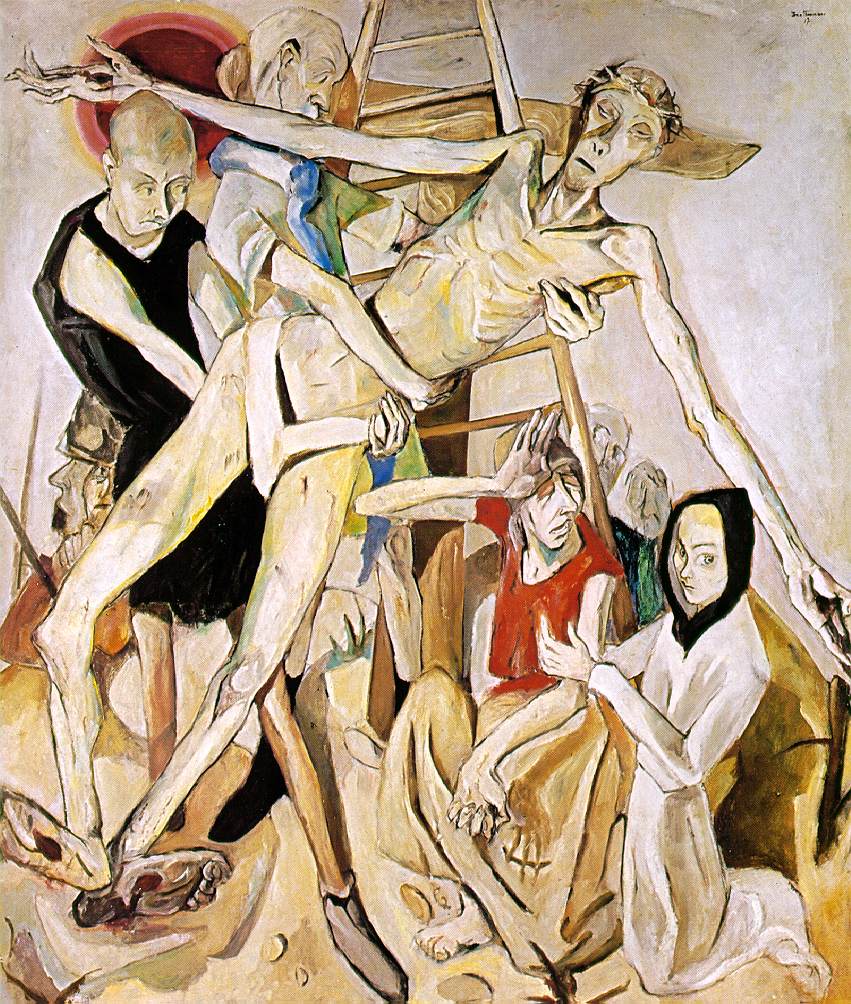Chosen with Good Friday in mind, this week’s picture is the Descent from the Cross by the German painter Max Beckmann. The work was inspired by the experience of serving as a medical orderly in the First World War. It can be seen in the large retrospective of Beckmann’s painting currently at Tate Modern.
The Descent from the Cross, painted in a very different style to that of the pictures that had preceded it, was a pivotal work in the artist’s career. It is not a masterpiece, exactly, but it has undeniable force – a kind of grotesque, broken pathos. Christ is a gaunt mannequin, blood seeping from the jagged holes in his hands and feet. There is a jagged quality also to Beckmann’s depiction of space, rendered as a series of shattered, overlapping planes sharply suggestive of violence and dislocation. The picture could almost have been painted on shards of broken glass instead of canvas.
When war had broken out, three years earlier, Beckmann was a distinctly self-assured young man. After graduating as a star pupil from the Grand Ducal Art Academy in Weimar, he had nurtured the somewhat old-fashioned ambition of becoming a history painter. He revered the Old Masters, above all Bosch and Rembrandt, whom he affectionately called “the old magicians… the group of friends who can accompany you on your thorny way.” His attitude to the painters of his own time was more mixed. He dismissed Picasso’s Cubism and the painting of Matisse as mere “brazen impudence”. But he liked Cezanne enough to refuse active military service for a role in the medical corps: “I won’t shoot at Frenchmen,” he said, “I owe too much to Cezanne.”
Beckmann was 30 when he volunteered and was sent first to East Prussia and then the Belgian Front....


